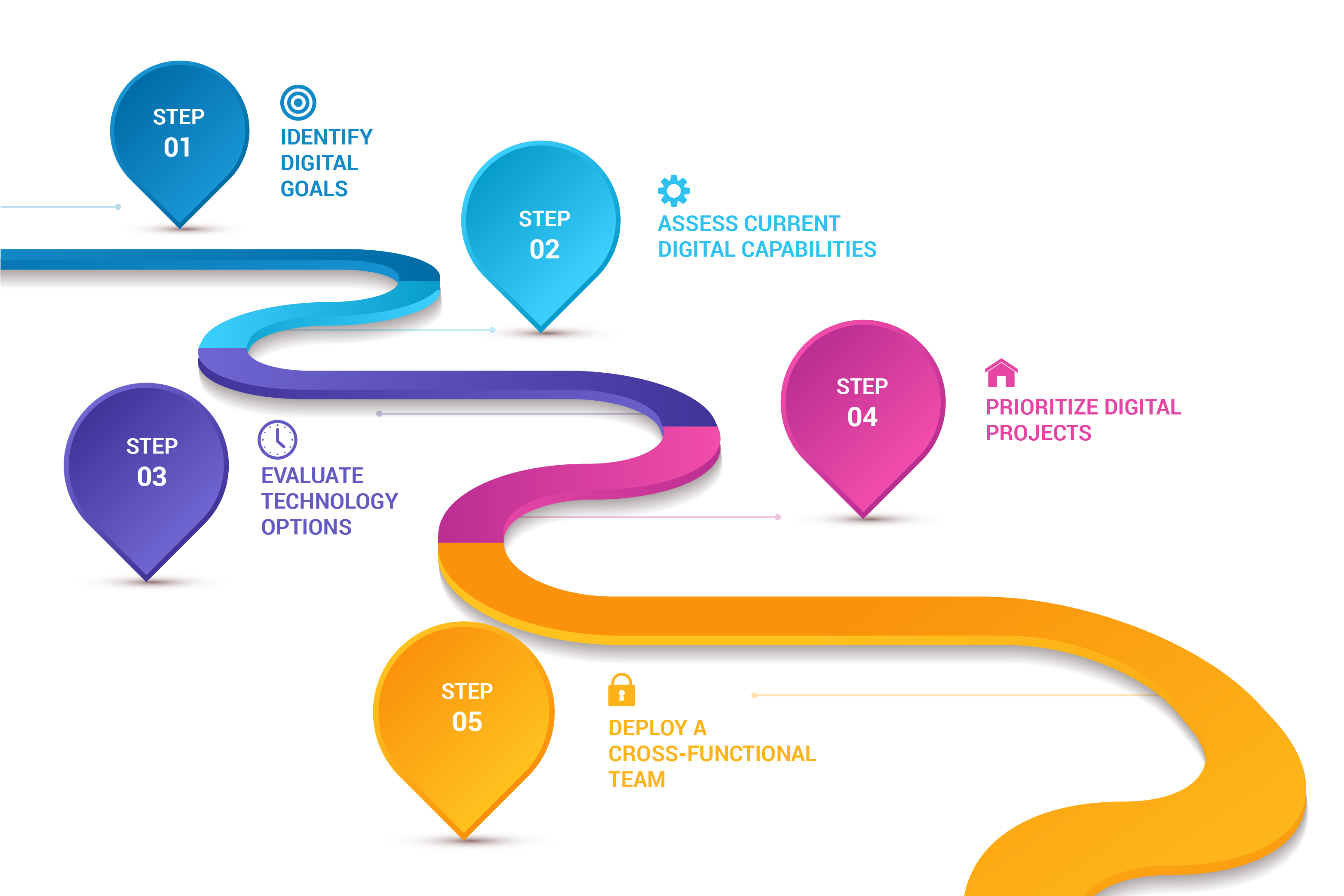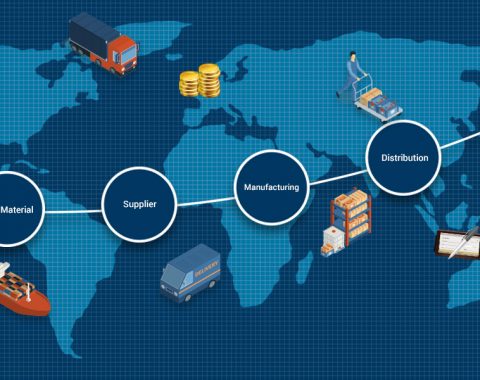As most industries are moving towards Industry 4.0, processes within companies, from manufacturing to customer relations, is becoming digitized. One vital element that needs expert digitization service in an organisation’s ecosystem is the Supply Chain Management (SCM).
Digitization of SCM is to bring in full transparency and break down barriers. From raw material suppliers to transporters, digitised SCM analyzes data, and provides full-visibility into processes through accurate reports for commercial decision-making.
Digitalisation or Supply Chain 4.0
Traditionally, the supply chain processes were independent of each other through product development, manufacturing, marketing and distribution, before reaching the customer. By introducing digitization to the supply chain all the above mentioned processes are being combined under a larger umbrella with an objective to mainly minimize waste/error and increase profitability.
Adopting key technologies like machine learning, artificial intelligence, blockchain, cloud computing etc., digitization is executed. From planning integrations and logistics visibility systems to smart warehousing and advanced analytics, this range of technology adoption and usage allows companies to face disruptions confidently. They will be in a position to anticipate change and prepare to tackle the change in real-time.
“The digitization of the supply chain enables companies to address the new requirements of the customers, the challenges on the supply side as well as the remaining expectations in efficiency improvement,”
Benefits of Digitising your Supply Chain
Some of the benefits of digitization are straight forward like instant alerts, reports, dashboard access etc. Whereas the others might be something absolutely new like:
Demand Sensing – If you know the demand, you can control the inventory. Hence, it reduces inventory costs and improves inventory accuracy.
Real-Time Asset Tracking – By tracking the physical assets in real-time, you improve delivery timelines and reduce freight costs.
Robotic Process Automation (RPA) – By automating manual processes, you can reduce errors and anomalies.
Supply Chain Integration – By integrating all the parties involved into a single system, you can improve coordination, collaboration and improve team/process efficiency.
Data analytics – By connecting the whole supply chain, from raw material suppliers to transporters, you have access to data like never before. And, can base your decisions on this new-found data.
Digitising SCM gives you the ability to set up complex dataflows/workflows across your enterprise. It gives you the power to move beyond your operational limits and meet customer demands continuously.
Where do I begin to implement Supply Chain 4.0?
Even after a decade, digitalisation seems challenging and confusing at the same time. To know where and why to start implementing new technologies, the best approach would be through expert digitization consultants or supply chain leaders.
75% of supply chain organizations reported concerns about the governance of digital projects. Yet corporate digital business initiatives continue to evolve rapidly, and 36% of supply chain organizations say their own digital projects don’t align with them.
– Gartner survey, 2017.
A reason that we see such results is because many organizations execute digitization projects in silos. While creating a supply chain digitization plan, it needs to be aligned with the organization’s ecosystem. Below is an table to show the current and digitized supply chain scenarios of the future:

Agile & Modern Approach Towards a Digital Supply Chain
Roadmap To Digitalisation: The key for a successful digitalisation of an existing supply chain is in developing a step-by-step process for integrating multiple technologies and capabilities required. In our experience, you will need to take these five primary steps:

Identify Digital Goals: Knowing the areas for improvement and what you want your business infrastructure to achieve is a great starting point. Conducting a survey will lead to defining realistic digitalization goals which will include types of technologies, strategies, etc.
Assess Current Digital Capabilities: Your current business landscape, ecosystem, capabilities and limitations will help you understand and realise your supply chain vision. With this process, you can outline all planned digital initiatives and its needed resources. From manpower to supporting technologies to be implemented, knowing your current status and where you’d like to reach will help you reach your digitalization goals faster.
Evaluate Technology Options: Figure out the necessary technologies to implement from machine learning to the Internet of Things (IoT) and list them in your digitalization road map. Whether it is off-the-shelf or customized options, before deciding on the technology, understanding if it will match your desired digital capabilities is essential.
Prioritize Digital Projects: Digitalization of the supply chain management system has many parts. Creating a priority list of where to start and how to expand it to other areas of the supply chain system is crucial. Having the right roadmap will aid in developing the right capabilities over short, medium, and long-term timescales.
Deploy Segmented Rollout: Going all-in with your digitisation project won’t be a great idea. After having created a successful road, with clearly defined goals and capabilities to achieve, you should start work where the highest benefit is expected. Will work on any chosen area, capabilities required will also need to evolve in tandem.
To implement an agile digital transformation solution, deploying cross-functional teams can be key. Having different professionals with different perspectives will make the development process more reliable and robust, making way for new business models to emerge.
Supply Chain 4.0 is part of Industry 4.0, and it is about more than just maximizing the value of your data. Automating your workflows and enabling human and computer interaction at a deeper level will future-proof your enterprise and business in a digital age.
We would love to hear your thoughts, please feel free to write to us here.
If you would like to schedule a consultation with our experts, we would be more than happy to assist you with our digital supply chain management services.


